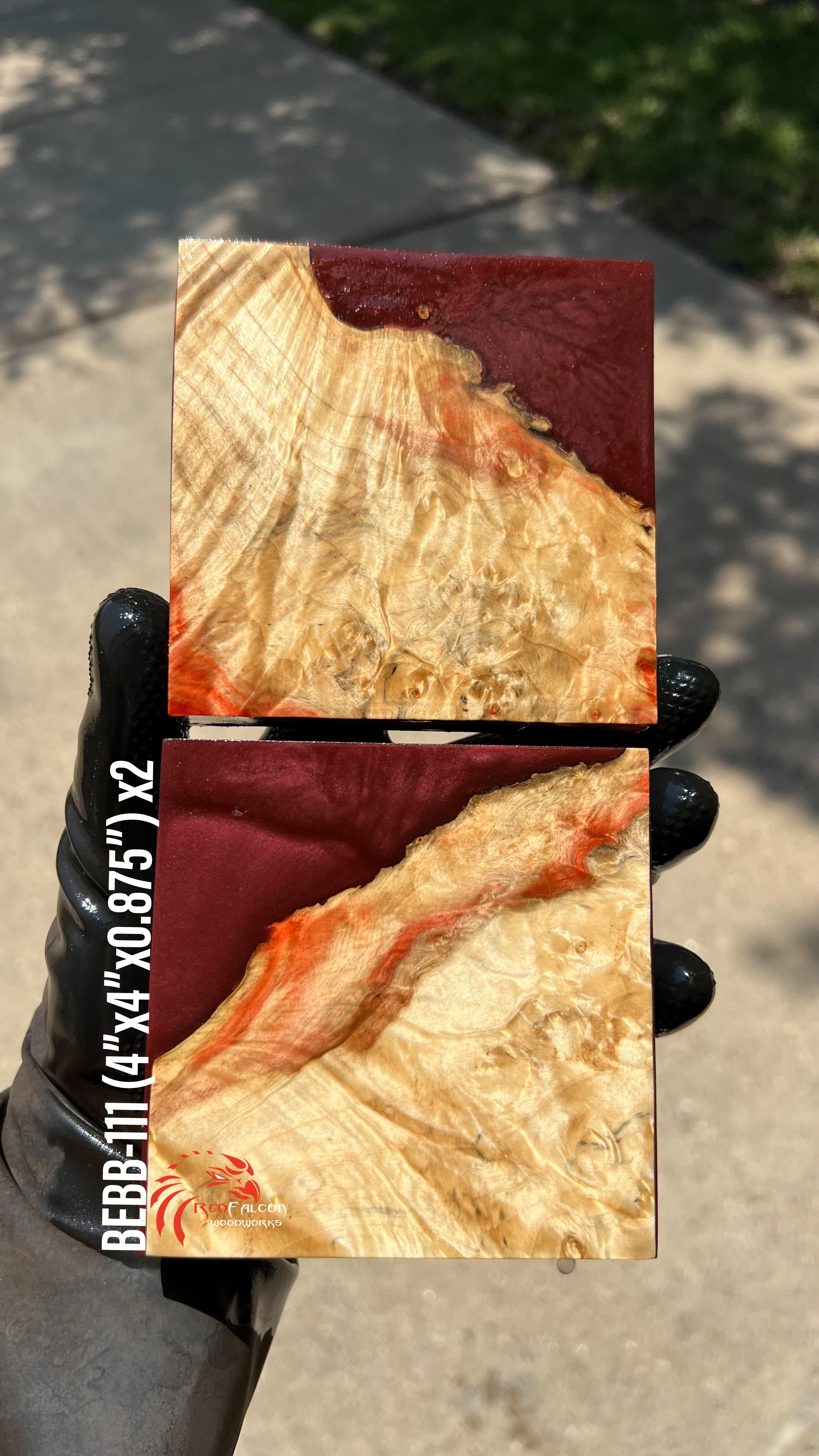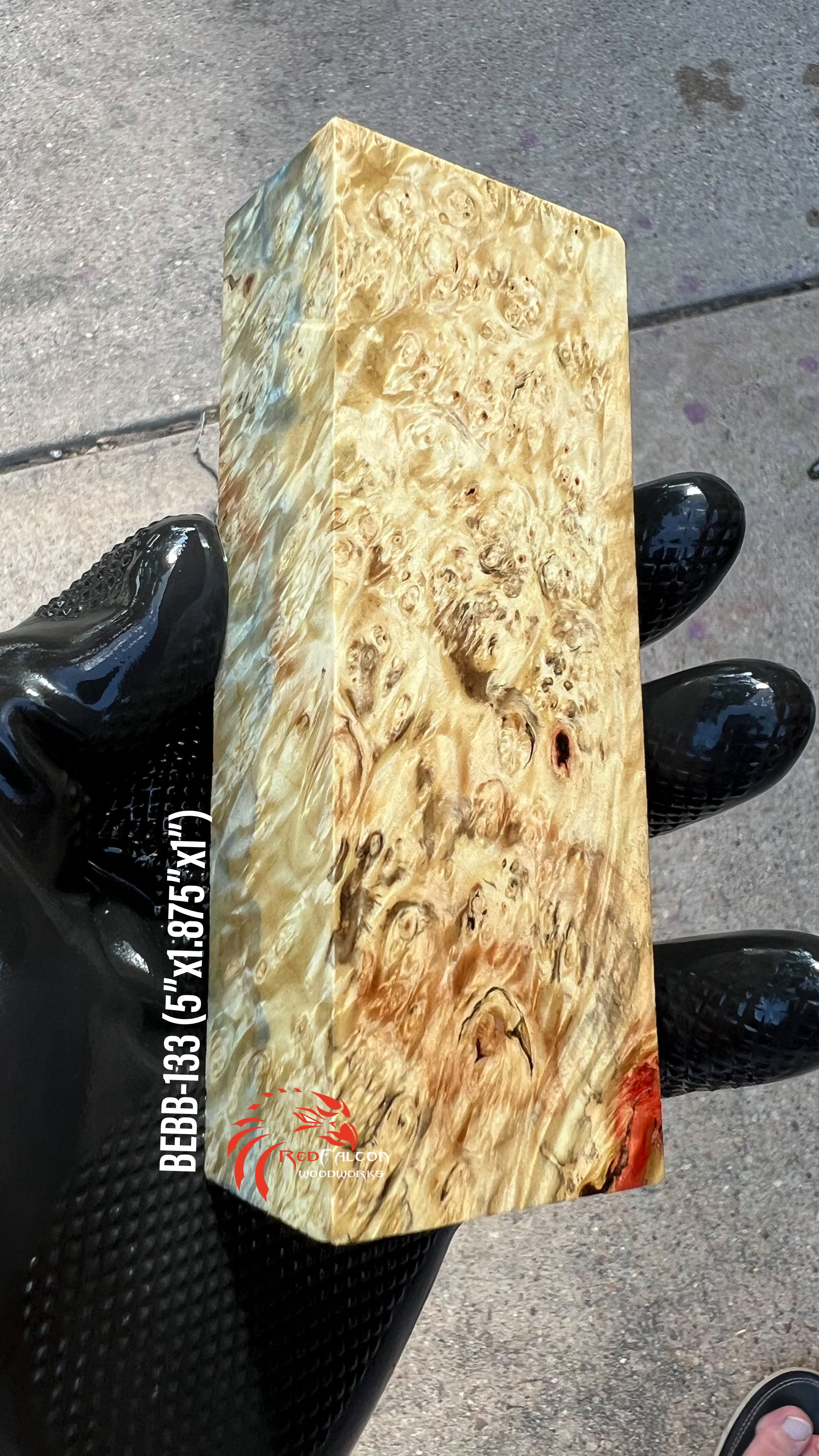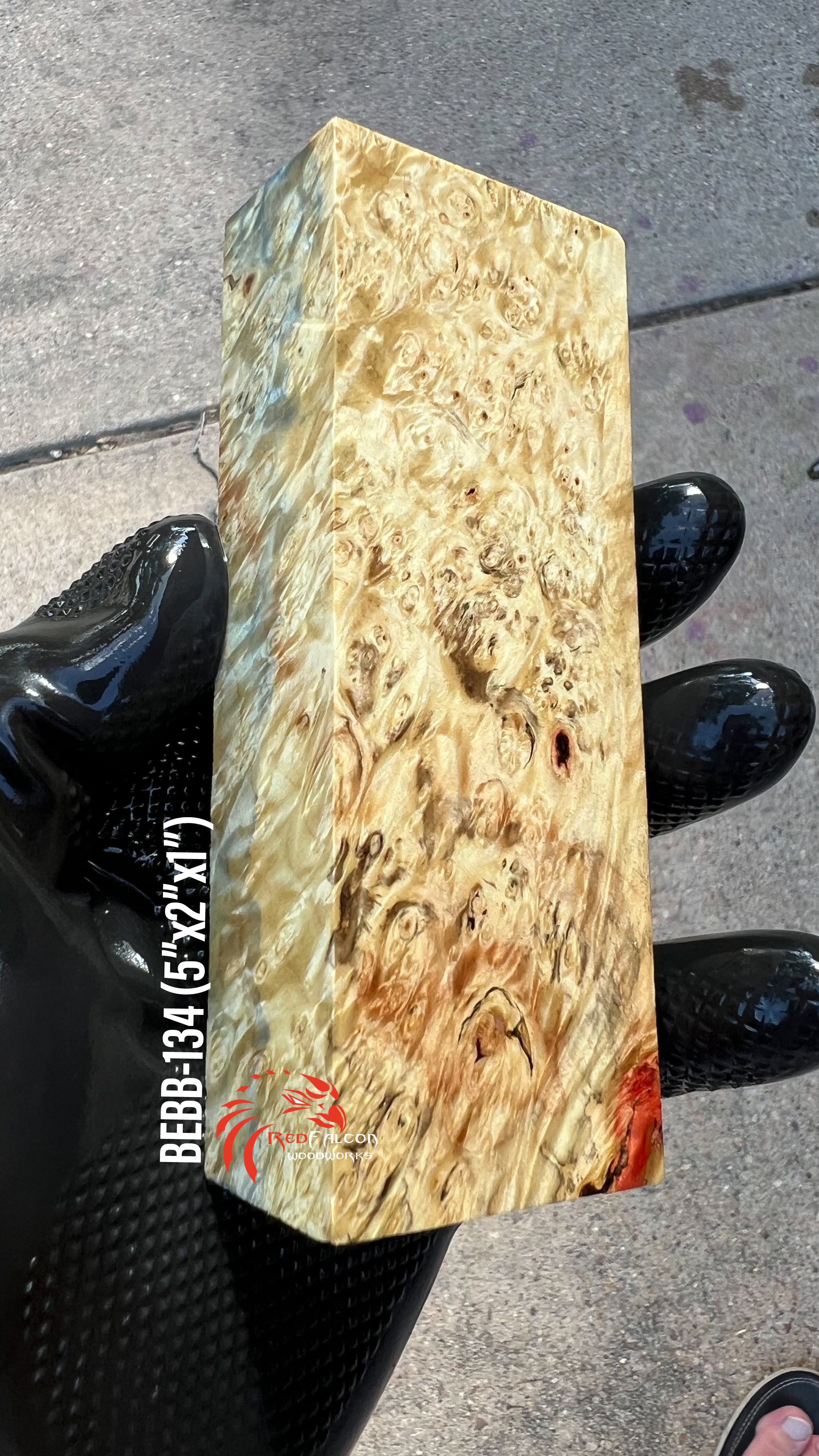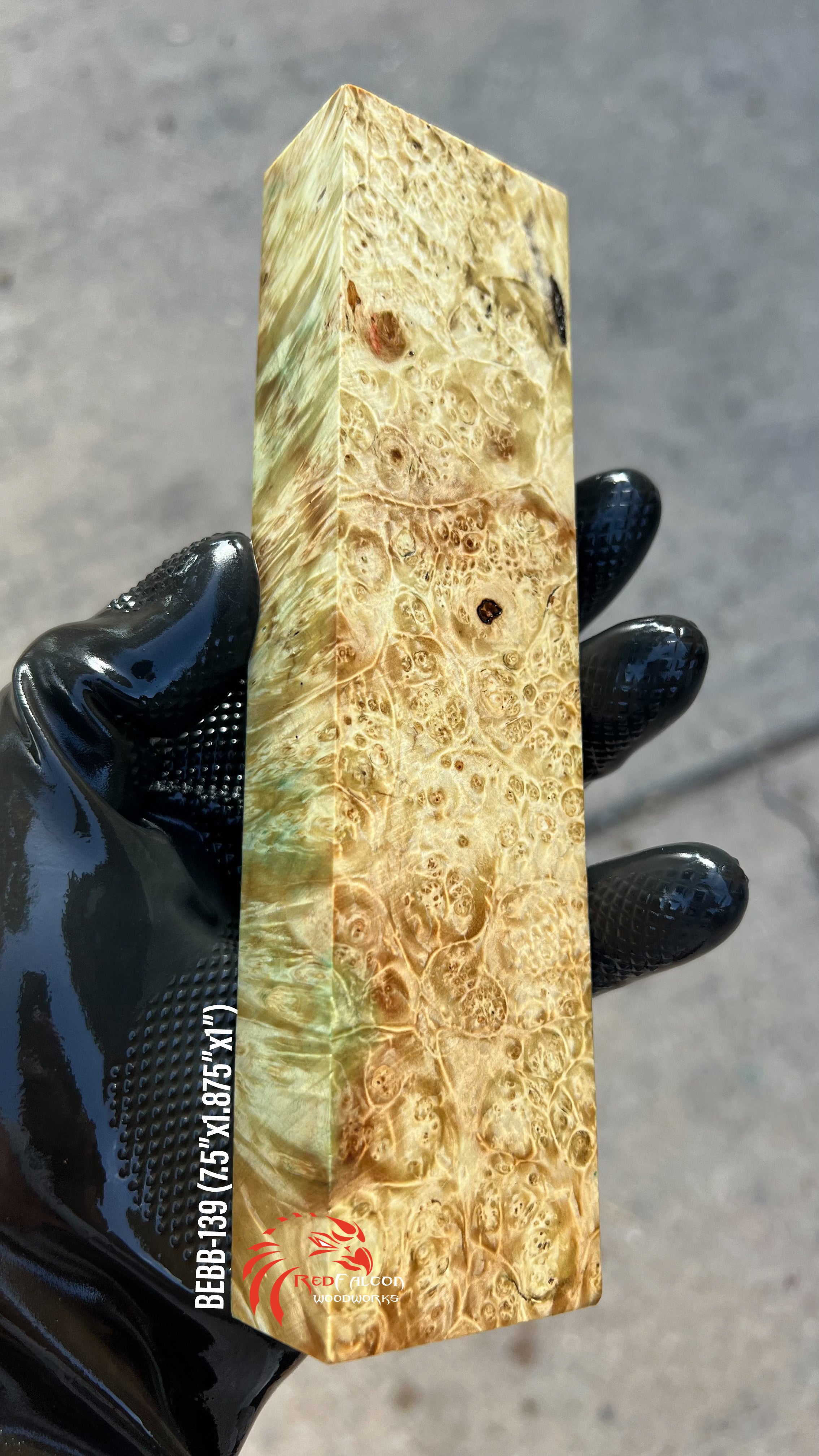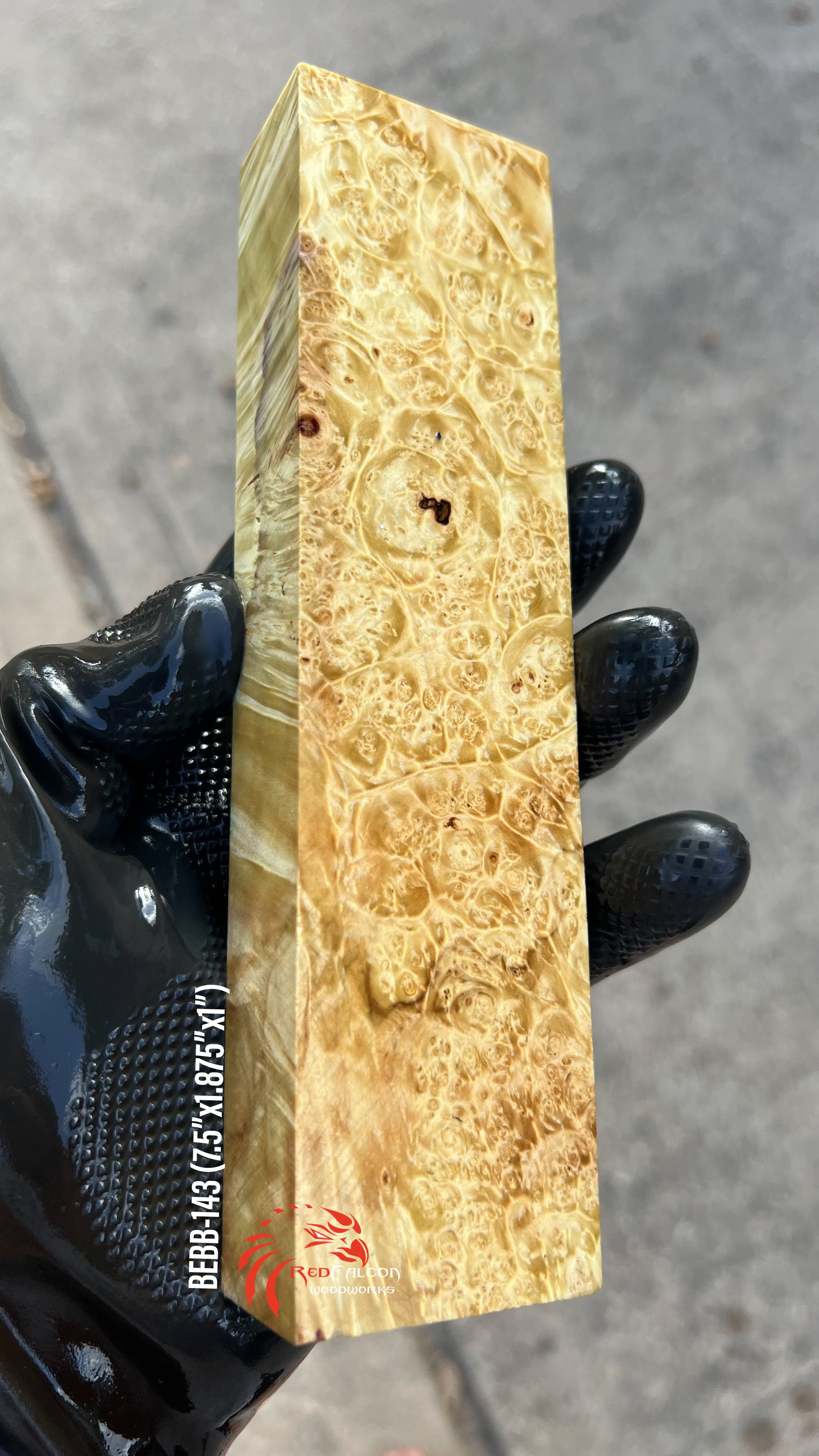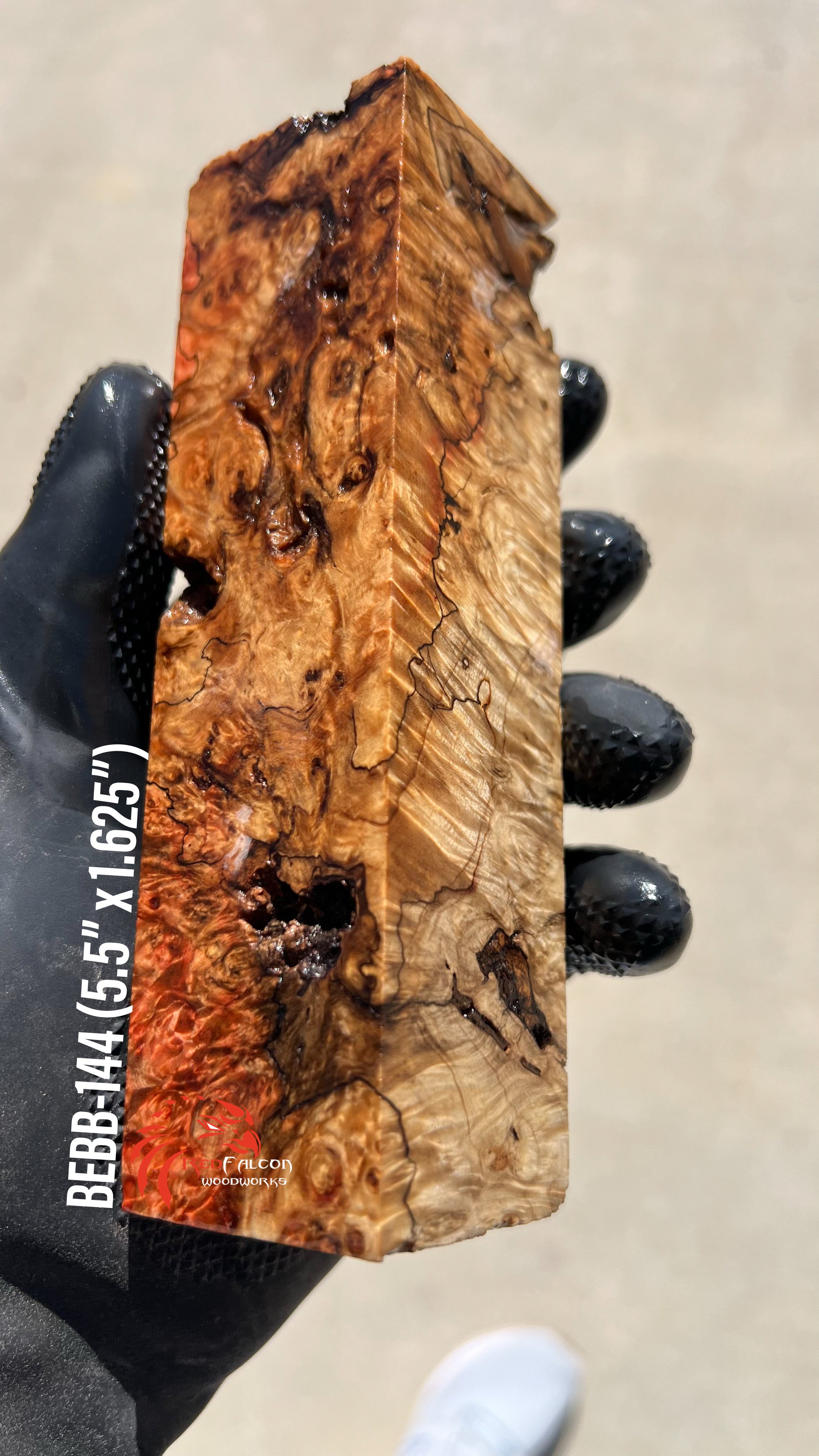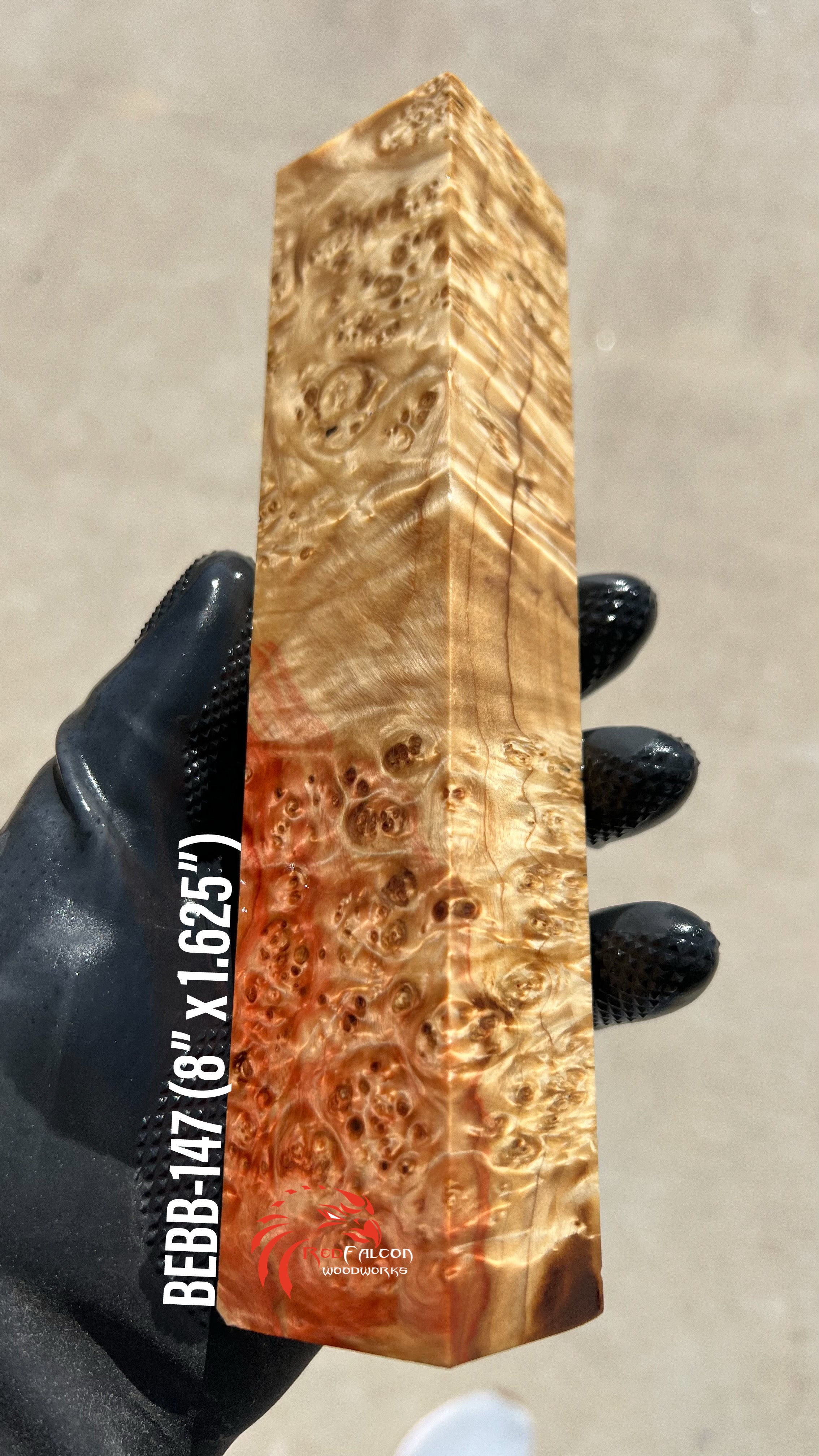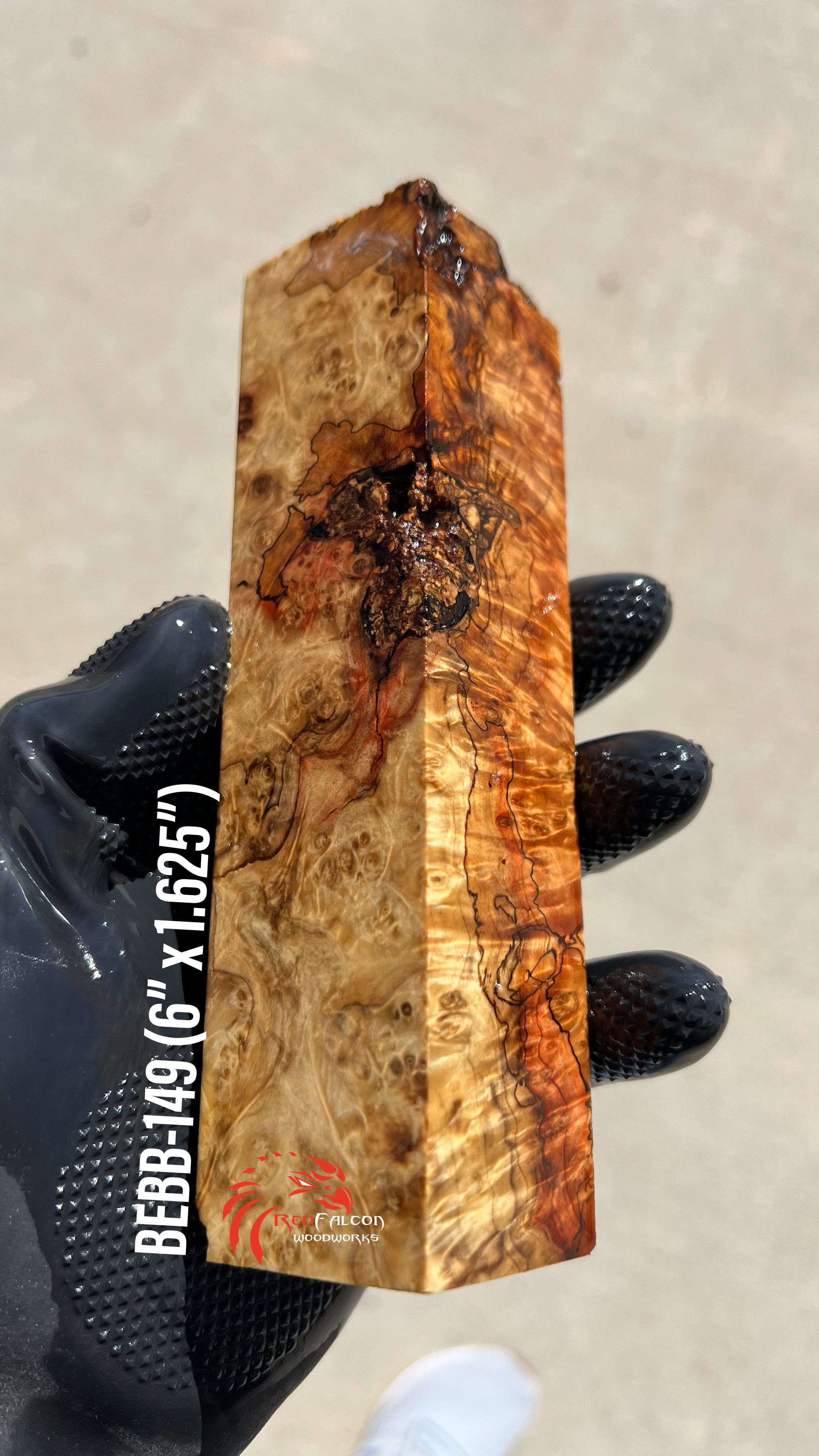Box elder burl is a type of wood that comes from the box elder tree (Acer negundo), which is a member of the maple family. Here are some key characteristics and descriptions of box elder burl:
Appearance
- Grain Pattern: Box elder burl features a unique and highly variable grain pattern, often with swirling, chaotic designs and intricate knots.
- Color: The wood can display a range of colors, including pale cream, reddish-brown, and deep purple or maroon tones, often enhanced by contrasting lighter and darker areas.
- Texture: The texture is typically smooth, with a fine grain that allows for a high polish.
Workability
- Ease of Cutting: Box elder burl is generally easy to work with, though the burl can have hidden voids and defects that require careful inspection.
- Finishing: It takes finishes well, allowing for both natural and colored stains to highlight the unique grain and color variations.
Uses
- Woodworking Projects: Ideal for crafting bowls, vases, and unique furniture pieces. Its striking appearance makes it a favorite among artisans.
- Turned Items: Box elder burl is popular for turning on a lathe, creating stunning decorative pieces.
Properties
- Density: It is relatively lightweight compared to other hardwoods, making it easier to handle.
- Durability: While not as hard as some hardwoods, box elder burl is still durable enough for various applications.
This wood is favored for its aesthetic appeal and versatility, making it a cherished choice for both practitioners and enthusiasts in the woodworking community.






